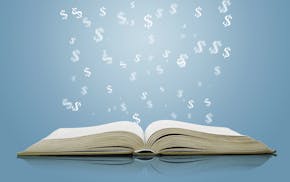Every year on July 1, with summer in full swing and fall tuition payments on the horizon, interest rates on federal student loans reset. But this year, along with rate decreases on some loan types, came major changes to the way students will borrow money in the years to come.
Beginning this month, federal student loans are no longer offered through banks. Instead, students will receive those loans directly from the federal government, a system many schools, including the University of Minnesota, have used for years. Some argue less choice will mean higher costs for students and poorer service, but it's too early to tell. But going direct is certain to ease the confusion about where to borrow money for school first. In the past, when banks used to offer federal loans in addition to the private student loans for which they set the terms, students sometimes took out pricier private loans before exhausting their federally backed options. Going forward, there will be no doubt: Take federal loans first.
As for the process of getting aid? It still starts with filling out the Free Application for Federal Student Aid at www.fafsa.ed.gov. Even if you have some time before applying for school, you still might want to visit the site to try out the new Fafsa4caster, a tool that helps you estimate federal financial aid eligibility early on while there's more time to make a plan based on the results.
Completing the FAFSA form unlocks the ability to take out loans from the federal government. Rates on subsidized Stafford loans, which means the government pays your interest during school, are dropping from 5.6 percent to 4.5 percent for undergraduates this school year. Rates on Parent PLUS loans are now set at 7.9 percent. Unsubsidized Stafford loans and graduate loans remain at 6.8 percent.
Income-based repayment
Recent changes make it possible for more graduates to repay their federal loans using income-based repayment, which allows monthly loan payments to be reduced based on a person's monthly income and family size. Most end up paying no more than 10 percent of their income under this plan, according to Ibrinfo.org, a site run by the Project on Student Debt.
Find out if you might qualify for an income-based repayment plan with the site's easy-to-use calculator. Until this month, married borrowers may have experienced a student loan repayment marriage penalty. Ibrinfo.org does a good job explaining the situation: "For married borrowers who file their taxes jointly, lenders will factor in the couple's total federal student loan debt, as well as their total income, to calculate payments. Originally, income-based repayment did not recognize that joint income has to cover both spouses' federal loan payments, resulting in payment requirements up to twice what two equivalent single people would have to pay."
Another change: Going forward, your eligibility for income-based repayment can be based on either your initial loan balance, or your current loan amount, whichever is higher. Being able to use the current loan amount is helpful for struggling students, who might have seen their loan balance grow through forebearance or deferment.
On top of a lower payment, borrowers in the income-based repayment plan can stretch out their term from the standard 10 years to as many as 25 years, at which point one's loan is forgiven. Don't forget that the longer it takes you to pay your loan, the more you ultimately pay. Then again, stretching out payments is obviously far better than defaulting on your loans, which are nearly impossible to discharge in bankruptcy.
Pay as you go
Students for the most part have been conditioned to put off paying their loans until they graduate. Paying off debt is tough without a full-time gig and it doesn't make sense to pay off your loans if they are subsidized during school. But you can make a dent in the amount you owe on unsubsidized loans by forgoing that pizza and movie once a month and making a small payment.
Sallie Mae is now urging students using its Smart Option Student Loan to make monthly in-school payments of $25, or to at least pay the interest that is accruing monthly while in school. Minnesota's MN SELF loan program requires quarterly interest payments. Paying something on such loans while in school will shave a chunk of change off of your college bill.
Is the economy affecting your ability to pay your loans? Tell Kara McGuire at 612-673-7293 or kmcguire@startribune.com.


